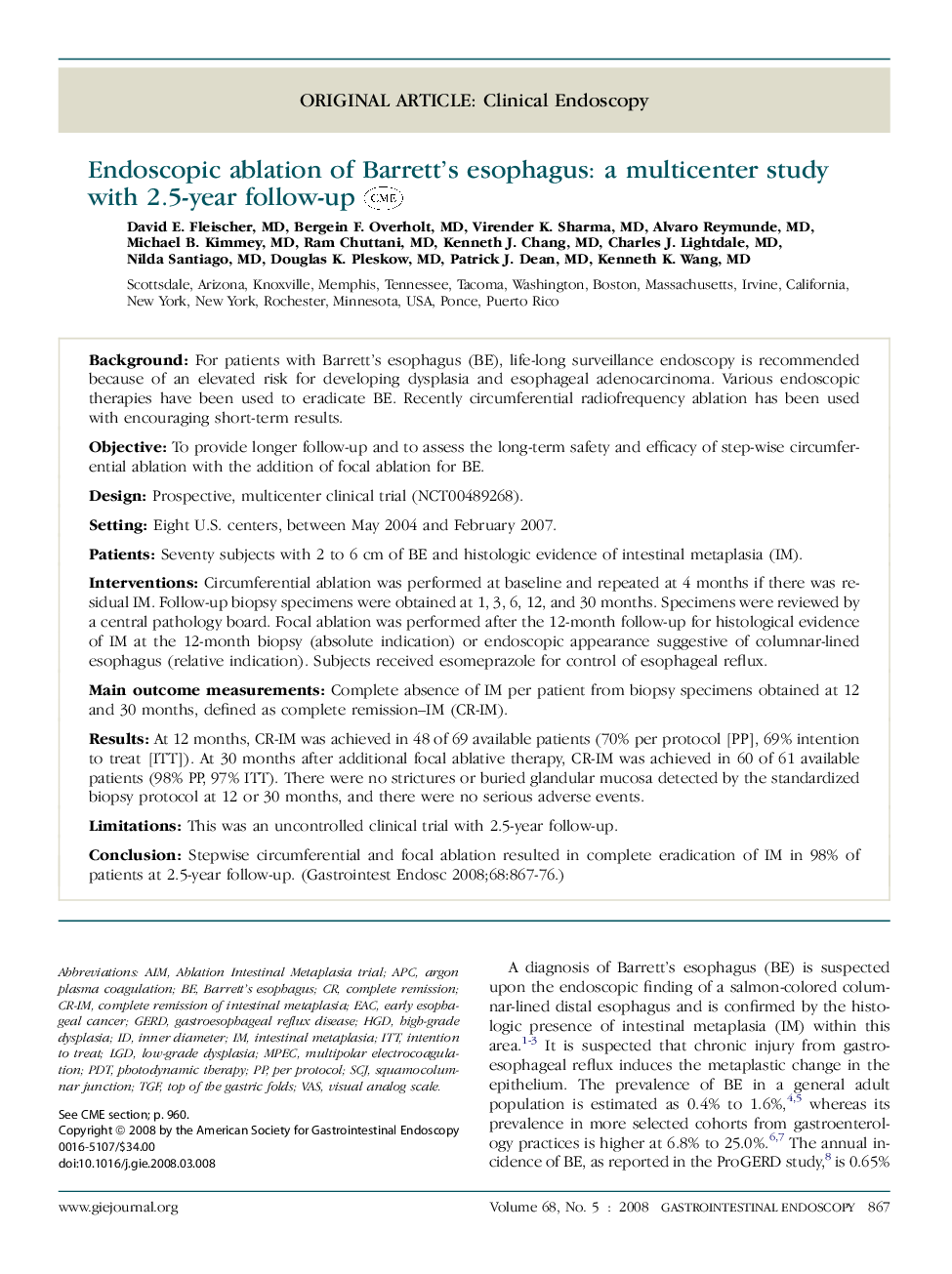| کد مقاله | کد نشریه | سال انتشار | مقاله انگلیسی | نسخه تمام متن |
|---|---|---|---|---|
| 3307163 | 1210381 | 2008 | 10 صفحه PDF | دانلود رایگان |

BackgroundFor patients with Barrett's esophagus (BE), life-long surveillance endoscopy is recommended because of an elevated risk for developing dysplasia and esophageal adenocarcinoma. Various endoscopic therapies have been used to eradicate BE. Recently circumferential radiofrequency ablation has been used with encouraging short-term results.ObjectiveTo provide longer follow-up and to assess the long-term safety and efficacy of step-wise circumferential ablation with the addition of focal ablation for BE.DesignProspective, multicenter clinical trial (NCT00489268).SettingEight U.S. centers, between May 2004 and February 2007.PatientsSeventy subjects with 2 to 6 cm of BE and histologic evidence of intestinal metaplasia (IM).InterventionsCircumferential ablation was performed at baseline and repeated at 4 months if there was residual IM. Follow-up biopsy specimens were obtained at 1, 3, 6, 12, and 30 months. Specimens were reviewed by a central pathology board. Focal ablation was performed after the 12-month follow-up for histological evidence of IM at the 12-month biopsy (absolute indication) or endoscopic appearance suggestive of columnar-lined esophagus (relative indication). Subjects received esomeprazole for control of esophageal reflux.Main outcome measurementsComplete absence of IM per patient from biopsy specimens obtained at 12 and 30 months, defined as complete remission–IM (CR-IM).ResultsAt 12 months, CR-IM was achieved in 48 of 69 available patients (70% per protocol [PP], 69% intention to treat [ITT]). At 30 months after additional focal ablative therapy, CR-IM was achieved in 60 of 61 available patients (98% PP, 97% ITT). There were no strictures or buried glandular mucosa detected by the standardized biopsy protocol at 12 or 30 months, and there were no serious adverse events.LimitationsThis was an uncontrolled clinical trial with 2.5-year follow-up.ConclusionStepwise circumferential and focal ablation resulted in complete eradication of IM in 98% of patients at 2.5-year follow-up.
Journal: Gastrointestinal Endoscopy - Volume 68, Issue 5, November 2008, Pages 867–876